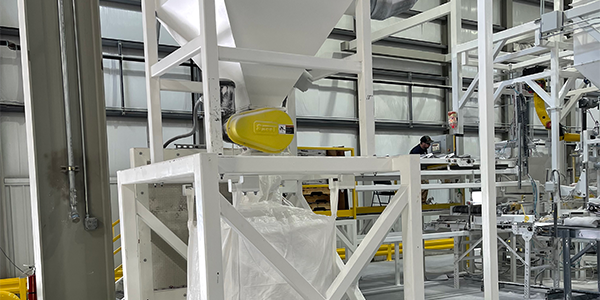
The story goes there was a fire marshal who performed a live demonstration to show just how dangerous dust is in a cornstarch factory. He poked a hole in the bottom of a five-gallon bucket, added a teaspoon of cornstarch, closed the lid and shook it. He struck a fireplace match and held the flame to the hole. That teaspoon of dust was so combustible that it not only blew the lid off the bucket, but sent it hurtling through the room’s ceiling tiles.
Dust is a fact of life; as ever present as the air we breathe. Dust control is just essential as breathing to most manufacturers, regardless of the material conveyed through their facilities or the end product those facilities produce. On the low-worry end of the scale, dust is problematic because it can contribute to infestations for food producers. All manufacturers are concerned with dust accelerating wear and tear on pneumatic conveying equipment. And as the fire marshal proved with his ceiling destruction, certain dust is extremely dangerous when not properly collected and contained. Take the combustible dust explosion and fire that occurred northwest of Savannah, Georgia at the Imperial Sugar plant in 2008. The massive explosion and fire killed 14 and injured 38.
Dust isn’t a mere annoyance. It’s a problem with consequences ranging from innocuous to lethal. So lethal in fact that the National Fire Protection Association (NFPA) established strict rules regarding explosion protection and the Occupational Safety and Health Administration (OSHA) has combustible dust standards by which manufacturers in certain industries must abide.
Decades of Experience Are Behind Our Customized Nuisance Dust Collection and Control Solutions
It takes decades of real-world experience to know when canned systems could meet your production and budget goals and when customizing a dry bulk material conveying or weighing/filling system solution will save time, money and resources for the results you want. And, Magnum Systems applies our expertise to customizing nuisance dust collection and control solutions as part of designed new pneumatic conveying systems or upgrading or retrofitting existing ones.
Of course, the ultimate goal with your dust collection and control solution is a clean operation—one that is healthy and safe for employees and the facility, plus increases longevity of the equipment. Reaching that goal takes a close evaluation of many aspects.
From where is the dust coming? This is where we start, pinpointing dust emission points.
What dust collector should be used? Density of the dust, and the velocity at which it travels through ductwork and how far the dust must travel determines the type of dust collector and its horsepower.
Which inlet is appropriate? The type of inlet used is based on the dust’s characteristics and properties. Material testing is important since the same material can be different based on the supplier. Plus, any mixing and such along the conveying line can change the dust’s qualities.
The filter media depends on whether the dust is fine, coarse, sticky, etc. Other questions to be answered regard air to cloth ratio and keeping the filter clean, a reverse air pull system if the dust is suspended (stays in the air) or if it simply needs to run 24 hours a day and change the filter once a year.
Now, what should be done with the dust? If the product dust is 100% salvageable then it can be blended back into the product, which means no wasted material. If comingled dusts cannot be introduced back into the product are collected along the line, it can be disposed of.
Of course, this is a high-level overview of what goes into customizing a nuisance dust collection component in pneumatic conveying. Magnum Systems has designed pneumatic conveying systems for dry bulk materials in industries, including food and ingredients, industrial minerals and bulk solids, agriculture feed and seed, and chemicals and plastic. Our experts can solve nuisance dust collection challenges, both those you know and those you might not. If your facility needs a customized nuisance dust collection and control solution as part of your pneumatic conveying system, contact us to discuss your needs.